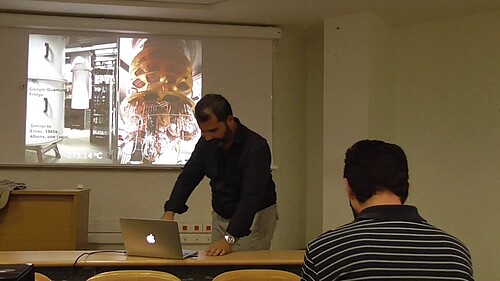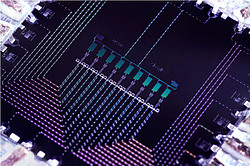Quantum simulators with light: Merging quantum optics to condensed matter for quantum technologies
Dimitris G. Angelakis, School of Electronic and Computer Engineering, Technical University of Crete and Centre for Quantum Technologies, National University of Singapore
Wednesday, 2/5/2018, 10am, 145.Π42
Classical computers require enormous computing power and memory to simulate even the most modest quantum systems. That makes it difficult to model, for example, why certain materials are insulators and others are conductors or even superconductors. R. Feynman had grasped this since the 1980s and suggested to use instead another more controllable and perhaps artificial quantum system as a "quantum computer" or specifically in this case a "quantum simulator".
Working examples of quantum simulators today include extremely cold atoms trapped with lasers and magnetic fields and ions in electromagnetic traps. Photons and polaritons in light-matter systems have also recently emerged as a promising avenue especially for simulating out of equilibrium many-body phenomena in a natural driven-dissipative setting.
I will briefly review in non-specialist terms the main ideas behind quantum computing and its quantum optical implementations with emphasis in superconducting qubits. After a brief summary of the main results in quantum simulations with light-mater systems [1,2] I will present in a bit more detail a recent experiment realizing the Hoeftstaedter butterfly and the many-body localization (MBL) transition using interacting photons in the latest superconducting quantum chip of Google [3]. Beyond the applications in understanding fundamental physics, the potential impact of quantum simulators in different areas of quantum and nano technology, material science as well as machine learning and big data processing will be touched upon.
References
- D.G. Angelakis and C. Noh “Many-body physics and quantum simulations with light” Report of Progress in Physics, 80 016401 (2016)
- "Quantum Simulations with Photons and Polaritons: Merging Quantum Optics with Condensed Matter Physics" by D.G. Angelakis (ed), Quantum Science and Technology Series, Springer, 2017, ISBN 978-3-319-52023-0.
- P. Roushan, C. Neill, J. Tangpanitanon, V.M. Bastidas,…, H. Neven, D. G. Angelakis, J. Martinis, “Spectral signatures of many-body localization with interacting photons” Science, 358, I6367, 2017
Recording






